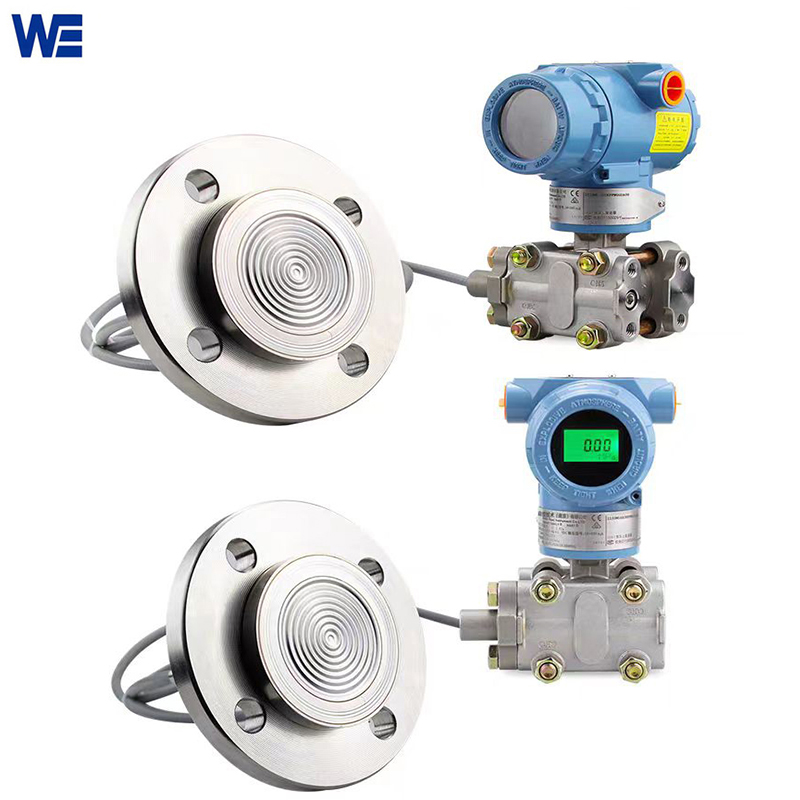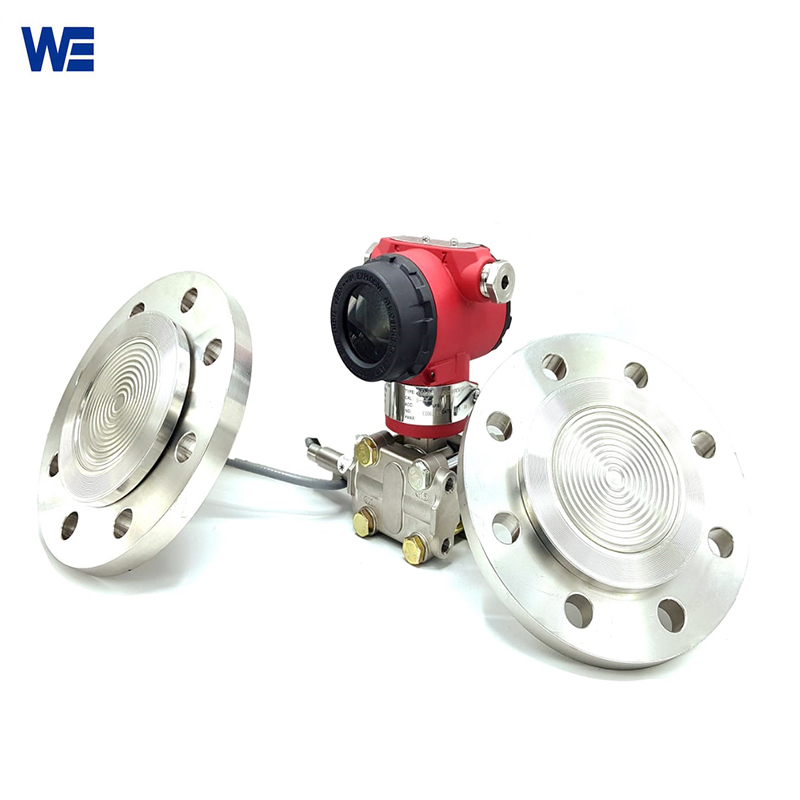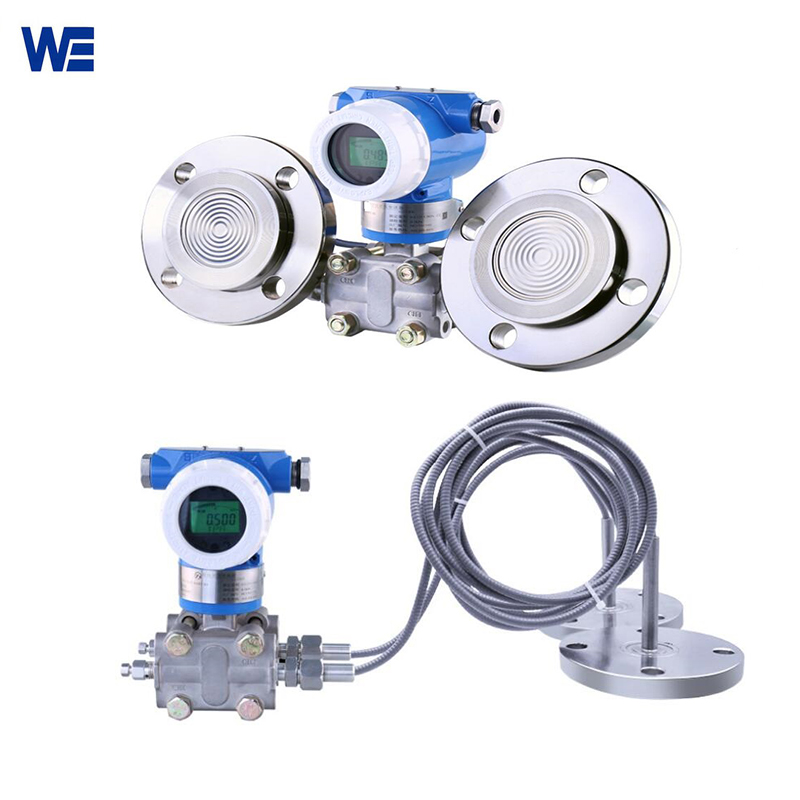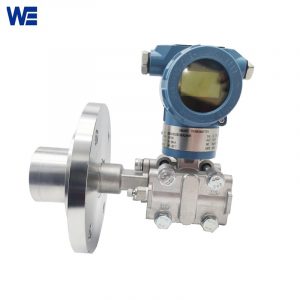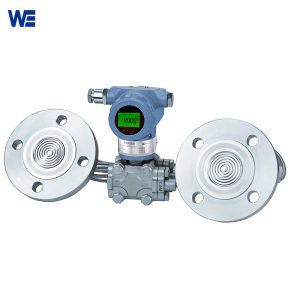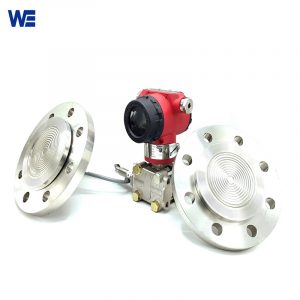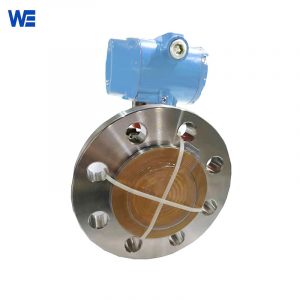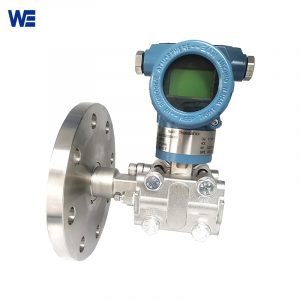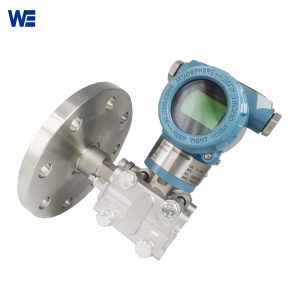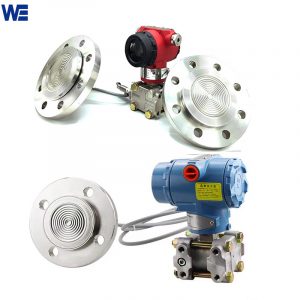- Have any questions?
- +86 15953537010
- admin@wepower-electronic.com
- Home
- Pressure Measurement
- Diaphram Pressure Transmitter
- Capillary Level Transmitter
Capillary Level Transmitter
Capillary Level Transmitter mainly works for viscous medium at high temperature, medium that is easy to crystallize,precipitation medium with solid particles or suspended matter,strong corrosive or high toxic medium,high hygiene and cleanliness industry , such as food, beverage and pharmaceutical industries etc.
![]()
Capillary Level Transmitter used to prevent the medium in the pipeline from directly entering the transmitter. It is connected to the transmitter by a capillary filled with fluid. It is used to measure the level, flow and pressure of liquid, gas or steam, and then convert it into 4-20mA DC signal output. When it is for closed tank, there will be pressure given inside tank,It’s supposed to choose either WE3051LT or WE3051RD,While setting the zero point, make sure the diaphragm area of high-pressure side to be fully wet with measured liquid for
higher accuracy.The center diaphragm of high-pressure side is the right zero point;When it is open tank, liquid above will be directly contacted with atmosphere. It’s supposed to choose
directly-connected WE3051,When setting the zero point, make sure the diaphragmarea of high-pressure side to be fully wet with measurediquid for higher accuracy. The center diaphragm of high-pressure side is the right zero point.
![]()
What is the common applicable occasions of the capillary level transmitter ?
By installing the remote capillary pressure level transmitter on a pipe or container to measure the pressure. The pressure is transmitted to the main body of the transmitter through the filling silicone oil in the capillary tube, and then the δ chamber and the circuit board in the main body of the transmitter transfer Pressure or differential pressure conversion 4-20mA signal output, cooperate with the hand-operated device conforming to HART protocol. Suitable for applicable occasions:
1.Viscous medium at high temperature;
2. A medium that is easy to crystallize;
3. Precipitation medium with solid particles or suspended matter;
4.Strong corrosive or high toxic medium
5. It can eliminate the occurrence of pressure pipe leakage and pollute the surrounding environment; it can eliminate the tedious work of frequently supplementing the isolation fluid due to the unstable measurement signal when using the isolation fluid;
6.The remote transmission device can avoid the intermixing of different instantaneous media, so that the measurement results truly reflect the actual situation of the process change;
7. Occasions that require high hygiene and cleanliness;
8. In the production of food, beverage and pharmaceutical industries, it is not only required that the parts of the transmitter contacting the medium meet the hygienic standards, but also it should be easy to wash to prevent cross-contamination of different batches of media.
![]()
| Process Fluid : | Liquid, Gas or Vapor |
| Application: | Liquid Level, Differential Pressure, pressure |
| Material | Flange : Carbon steel/ Stainless Steel 304/ Stainless Steel 316 |
| Diaphragms : Stainless Steel 316L/ Hastelloy B/ Hastelloy C/ Tantalum/ PTFE-coated Tantalum Diaphragm | |
| Capillary : Stainless Steel with PVC coating | |
| Flange Size | 40mm, 50mm, 80mm, 100mm, 1-1/2″, 2″, 3″, 4″ |
| Flange Rating | JIS 10K / JIS 20K / JIS 40K |
| ANSI 150# / ANSI 300# / ANSI 600# | |
| DIN PN10 / PN16 / PN25 / PN40 | |
| Tri Clamp (DIN32676 / ISO2852) | |
| Installation Style | Direct-mount: RD/ One-sided Capillary: RD1/ Two-sided Capillaries: RD2 |
| Capillary Length | 1.0 M ~ 10 M |
| Time Response | Less than 1.12 seconds |
| Accuracy | +/-0.15% of Span |
| Explosion-proof | EX d; Ex ia |
| Fill Fluid and Maximum : | Silicone (Max. Temperature 130 °C) |
| Max. Temperature | Direct-Mount : -20 to 80 °C |
| Remote Diaphragm : -40 to 280 °C | |
| Max. Pressure | 8.0MPa |
| Stability | +/-0.15% of URL for 2 years |
![]()
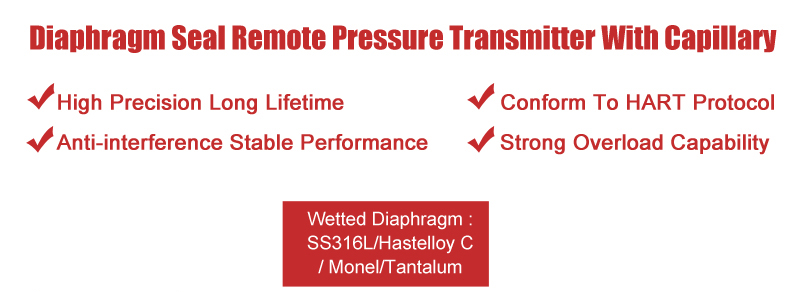

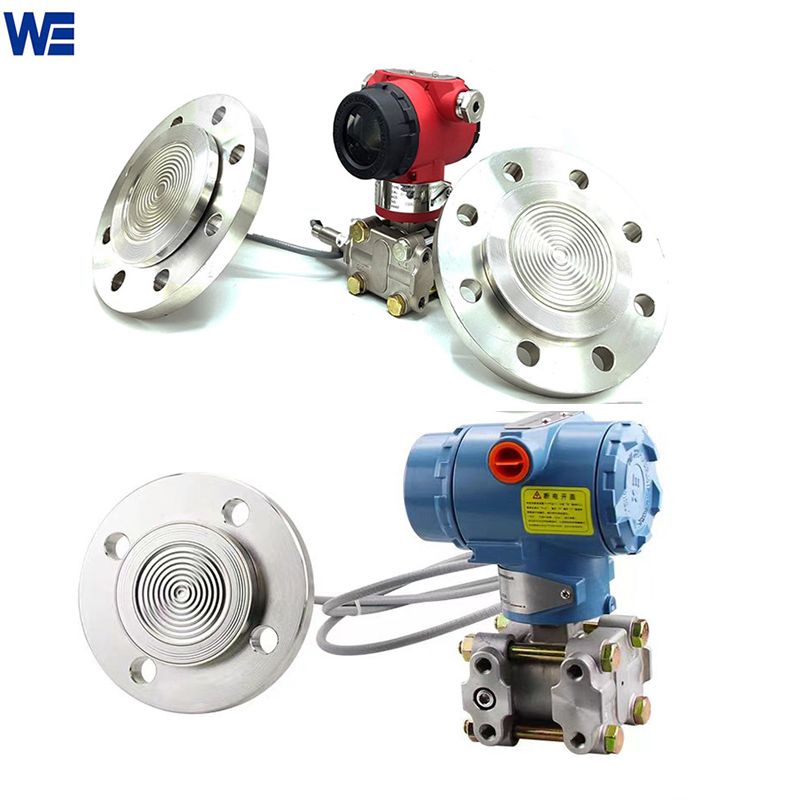
![]()
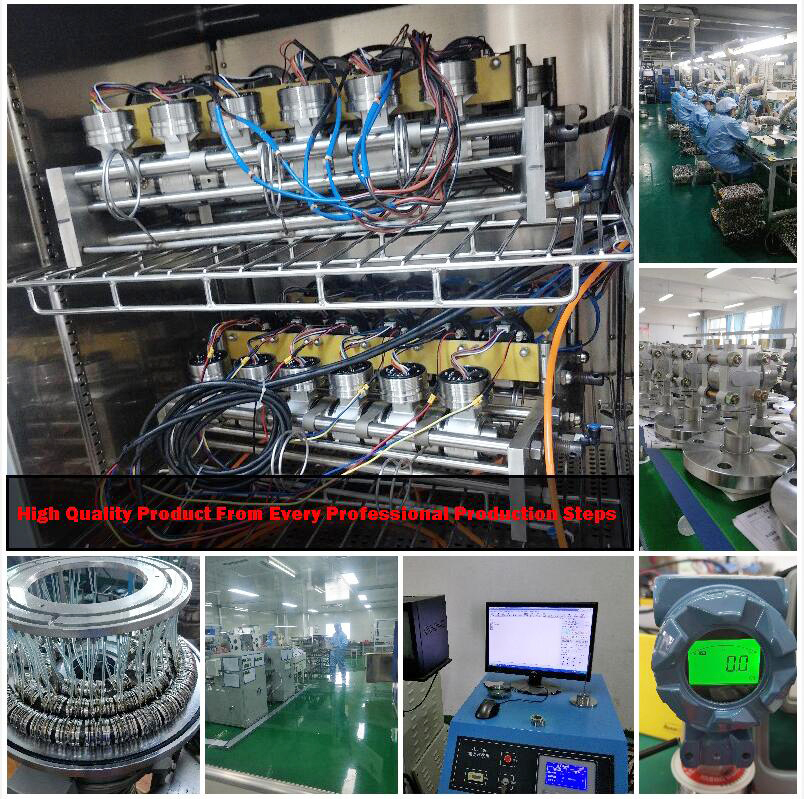
![]()
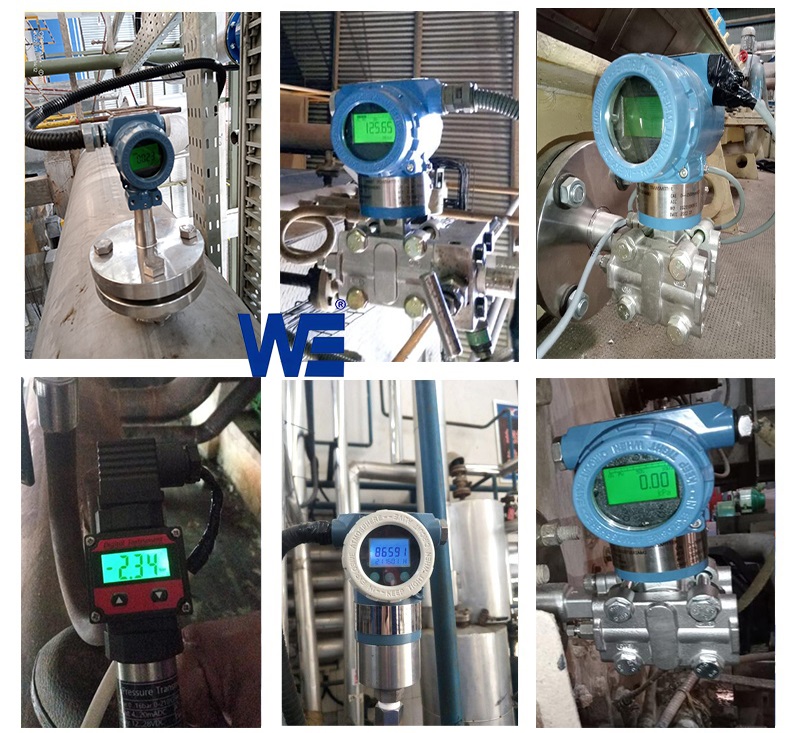
![]()
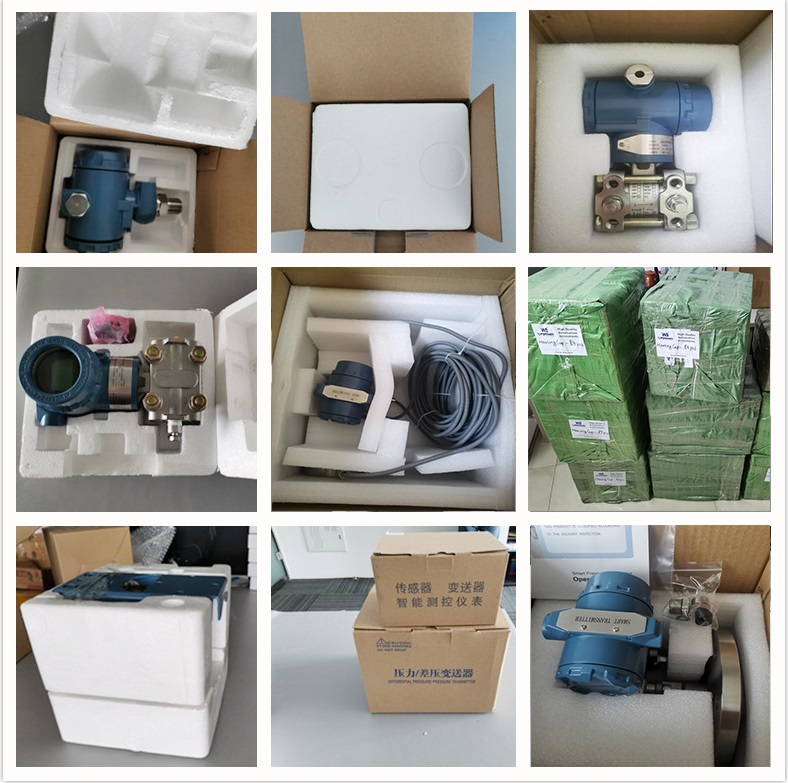
![]()
| WE3051RD Series | ||||||||||
| Example: WERD2-A22B4-N05-W | ||||||||||
| WERD | X- | X | X | X | X | X | -X | XX | -X | Description |
| Installation Style | RD- | / | Direct-mount | |||||||
| 1- | One-sided Capillary Connects Remote Diaphragm Seal | |||||||||
| 2- | Two-sided Capillaries Connect Remote Diaphragm Seal (RD2 Only) | |||||||||
| Process Connection | 1 | / | PN10 | |||||||
| 2 | PN16 | |||||||||
| 3 | PN25 | |||||||||
| 4 | PN40 | |||||||||
| A | ANSI 150# | |||||||||
| B | ANSI 300# | |||||||||
| J | JIS 10K | |||||||||
| K | JIS 20K | |||||||||
| L | JIS 40K | |||||||||
| T | Tri-clamp (DIN32676 / ISO2852) | |||||||||
| Z | Other | |||||||||
| Flange Size | 1 | / | 1-1/2″ (Diaphragm Diameter If Extended: 38mm) | |||||||
| 2 | 2″ (Diaphragm Diameter If Extended: 48mm) | |||||||||
| 3 | 3″ (Diaphragm Diameter If Extended: 66mm) | |||||||||
| 4 | 4″ (Diaphragm Diameter If Extended: 89mm) | |||||||||
| Diaphragm Extension Length | 0 | / | Flush Diaphragm | |||||||
| 2 | 2″ (50mm) | |||||||||
| 4 | 4″ (100mm) | |||||||||
| 6 | 6″ (150mm) | |||||||||
| Diaphragm Material | N | / | Stainless Steel 316L | |||||||
| B | Hastelloy B | |||||||||
| C | Hastelloy C | |||||||||
| T | Tantalum | |||||||||
| P | PTFE-coated Tantalum Diaphragm (PTFE Thickness:40μm) | |||||||||
| Z | Other | |||||||||
| Flange Material | N | / | Carbon Steel | |||||||
| 4 | Stainless Steel 304 | |||||||||
| 6 | Stainless Steel 316 | |||||||||
| Z | Other | |||||||||
| Fill Fluid | -N | / | Silicone (Max. Temperature 130 °C) | |||||||
| -S | HT Silicone (Max. Temperature 280 °C) | |||||||||
| -F | Fluorine (Max. Temperature 160 °C) | |||||||||
| -V | Vegetable Oil (Max. Temperature 130 °C) | |||||||||
| Capillary Length | NN | / | Direct-Mount | |||||||
| 01-10 | 1 M ~ 10 M | |||||||||
| Option | – N | None | ||||||||
| – W | Oil-free and Water-free Treatment | |||||||||

